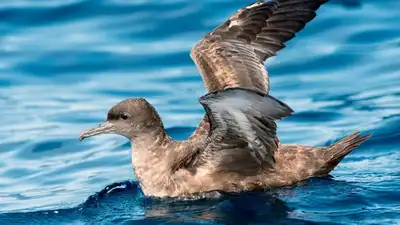ARTICLE AD BOX

Most animals move with the seasons, but some birds take migration to a whole different level– crossing entire oceans, flying nonstop for days, and clocking distances that sound almost unreal.
While most of us are still hitting snooze on an early morning flight, these feathered travelers are halfway across the globe.From chasing daylight across the poles to flying solo over thousands of miles of open sea, these birds don’t just migrate– they break records. And the most fascinating part? They do it all without GPS, maps, or even a break for food.Here’s a look at five bird species that take migration to extreme heights– literally.Arctic TernMost birds fly around to avoid the cold or find food. But the Arctic tern? It takes things to the extreme. Every year, this tiny bird makes a massive journey from one end of the world to the other– literally. It starts up in the Arctic, then flies all the way down to Antarctica... and yes, turns around and heads back.

The distance? About 60,000 miles, every year. It does this without fanfare, just following its instincts. What's even more wild is that it spends so much time in daylight– two summers a year, one at each pole.
Over the course of its life, one tern can end up flying over a million miles. That’s more than a trip to the moon– and back– multiple times.Sooty ShearwaterIf you’ve never heard of the sooty shearwater, you’re not alone– but this bird deserves way more attention. Every year, it covers a distance that’s hard to wrap your head around: roughly 40,000 miles.

It breeds on southern islands like New Zealand, and once that’s done, it heads north– all the way to places like Japan, Alaska, and even off the coast of California.
And get this– it often does this trip solo. No big flocks, just one bird–gliding over the ocean, chasing squid and fish across the globe. Short-tailed ShearwaterIn Australia, people call this bird the "muttonbird," but its real name is the short-tailed shearwater. Don’t be fooled by its size– this thing is built for endurance. After raising chicks on islands near Tasmania and southern Australia, it takes off on a giant loop around the Pacific Ocean.

It heads north to the Bering Sea, then swings back around the Pacific Rim. That entire journey clocks in around 27,000 miles. They’ve got wings made for skimming just above the water, barely flapping, riding the wind. And while they’re flying, they scoop up squid, crustaceans, and whatever else the ocean throws their way.Bar-tailed GodwitThis bird doesn’t take breaks– literally. The bar-tailed godwit is famous for doing one of the longest nonstop flights ever recorded: from Alaska to New Zealand.
That’s nearly 7,500 miles– in one go.

They breed in the Arctic, but when winter rolls in, they head to coasts much farther south– places like Southeast Asia, Oceania, and parts of Africa. Over a full year, their migration adds up to about 18,000 miles. They’ve got long, curved beaks they use to dig into muddy shorelines, hunting for tiny invertebrates most people wouldn’t even notice.Pectoral SandpiperLast on the list, but definitely not the least.
The pectoral sandpiper might be small, but it doesn’t act like it. These birds breed way up north in the Arctic tundra, and when the season changes, they head thousands of miles south– to South America or even Oceania.Their round-trip migration can be up to 18,000 miles each year. You’ll usually find them poking around in marshes and wetlands, searching for insects with their thin, pointed bills. They’re also one of those species scientists keep a close eye on because they react quickly to changes in the environment– sort of like nature’s early warning system.



.png)
.png)
.png)
















 8 hours ago
7
8 hours ago
7







 English (US) ·
English (US) ·